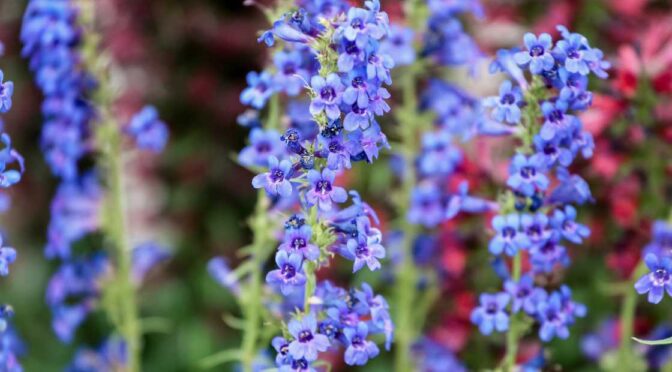Deadheading is an essential gardening task that helps keep your plants healthy and encourages them to produce more blooms. One plant that benefits from deadheading is the beardtongue. Deadheading beardtongue not only improves its appearance but also prolongs its blooming period. In this article, we’ll go over everything you need to know about deadheading beardtongue.
Identify the Right Time to Deadhead
Beardtongue blooms in late spring to early summer, and the flowers will start to fade by mid-summer. It’s essential to wait until the blooms have started to fade and the petals have begun to wilt before deadheading. This way, the plant can transfer energy from the dead blooms to the new growth.
Gather Your Tools
To deadhead beardtongue, you’ll need a pair of sharp pruning shears or scissors. Make sure your tools are clean and sharp to avoid damaging the plant.
Locate the Spent Blooms
Look for blooms that have begun to fade and wilt. They will have lost their vibrant color and will look droopy.
Cut the Stem
Using your pruning shears or scissors, cut the stem of the spent blooms just above the first set of healthy leaves. Make sure you don’t cut too low, as this could damage the plant.
Repeat the Process
Repeat the deadheading process for all the spent blooms on your beardtongue plant. This will encourage the plant to produce new blooms and extend its blooming period.
Dispose of the Spent Blooms
Dispose of the spent blooms in the trash or compost bin. Don’t leave them on the ground, as they can attract pests and diseases.
Water and Fertilize
After deadheading, make sure to water your beardtongue plant thoroughly. This will help it recover from the stress of deadheading. You can also fertilize your plant with a balanced fertilizer to encourage new growth and blooms.
FAQs
When is the best time to deadhead beardtongue?
The best time to deadhead beardtongue is when the blooms have started to fade and the petals have begun to wilt, usually in mid-summer. Waiting until this time ensures that the plant can transfer energy from the dead blooms to the new growth, resulting in a longer blooming period.
What tools do I need to deadhead beardtongue?
To deadhead beardtongue, you’ll need a pair of sharp pruning shears or scissors. It’s essential to use clean and sharp tools to avoid damaging the plant. Make sure to sanitize your tools before and after use to prevent the spread of diseases.
Can deadheading beardtongue damage the plant?
No, deadheading beardtongue will not damage the plant. In fact, it’s an essential gardening task that helps keep the plant healthy and encourages it to produce more blooms. However, it’s crucial to cut the stem just above the first set of healthy leaves to avoid damaging the plant. Also, dispose of the spent blooms properly to prevent attracting pests and diseases.
Conclusion
Deadheading beardtongue is a simple yet essential gardening task that can improve the health and appearance of your plant. By following these steps, you can deadhead your beardtongue effectively and enjoy its blooms for a longer period. Remember to wait until the blooms have started to fade, use clean and sharp tools, cut just above the healthy leaves, and dispose of the spent blooms properly. Happy gardening!




